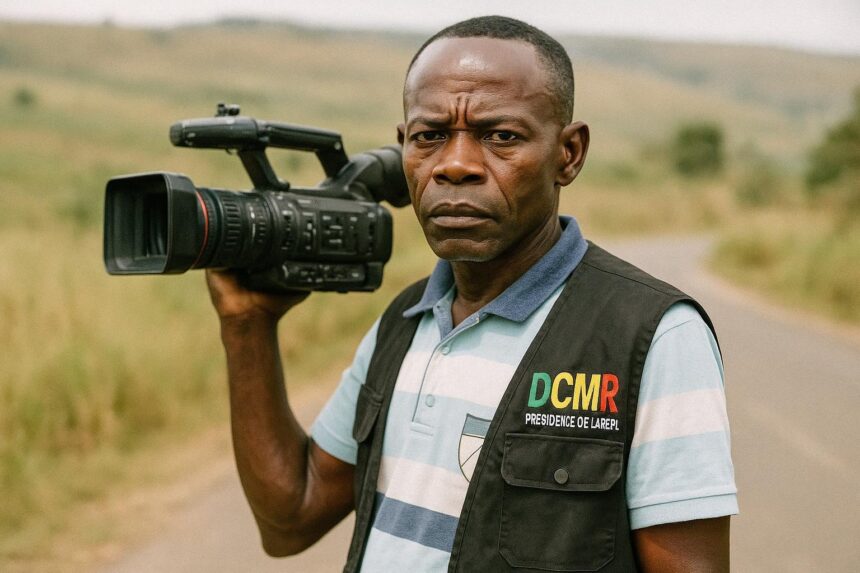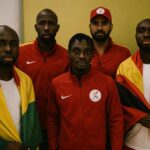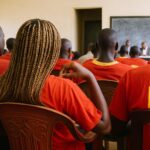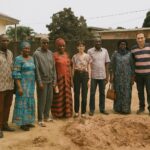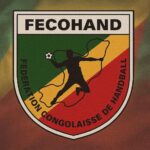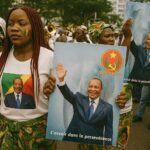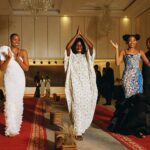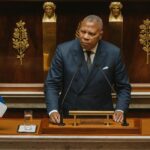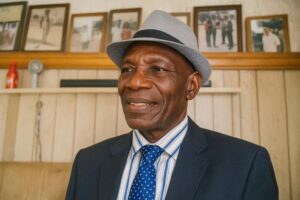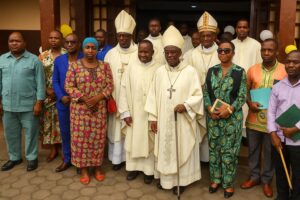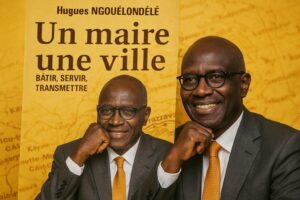From Talangaï Streets to National Screens
Brazzaville woke up heavy-hearted after the passing of Anicet Rodrigue Mongala, the discreet cameraman whose stabilised frames fed DRTV International for two decades.
Nicknamed “Trépied” for the way he seemed fused to his tripod, Mongala died on 2 September 2025 at 53, leaving colleagues and a teenage daughter facing an unexpected silence.
His first shots date back to the early days of the private channel, when he shared the only ENG camera with pioneer Ladoré Foutika and learned to craft steady stories under pressure.
The Farewell at Ciel et Vie Cemetery
On Thursday 18 September, mourners gathered at the airy esplanade of General Blaise Adoua, near the Talangaï Gardens, before the coffin was driven to Kintélé’s Ciel et Vie cemetery.
Sylvain Balinga represented DRTV’s management, placing the channel’s blue-and-white ribbon on the casket while Maria Fakrut Dinova of the Russian House offered quiet condolences, a sign of the cultural bridges Mongala’s images had once illustrated.
Protocol officers from the Presidency of the Republic also stood by, remembering the countless official journeys he captured without a single shake, including a three-kilometre reverse walk in Owando that still circulates in training rooms.
Peers Recall a Gentle Craftsman
Giscard Mahoungou, now deputy editor-in-chief, struggled to keep his voice: he had shared almost fifteen years of presidential coverage with Mongala and had never heard him raise his tone.
“We cry for experience,” Mahoungou told the crowd, evoking a colleague who balanced hierarchy, patience and the tiny improvisations that make a state visit watchable.
Older journalists nodded: before stabilisers and drones, Mongala’s shoulders were the gimbals of DRTV, turning unsettled rallies into fluid narratives that kept viewers engaged across Brazzaville’s living-room screens.
Away from politics, he loved slow human angles: the first paddle strokes of the Poto-Poto regatta, sunrise rehearsals of the national ballet, a grandmother’s laughter during vaccination day.
A Legacy Carried by the Next Generation
Technicians agree that his greatest lesson was humility: cables first, glory later.
The teenage daughter he leaves behind, now in secondary school, has received an informal scholarship promise from senior staff, who say they owe her the education her father sacrificed overtime for.
DRTV has already renamed its newsroom training bay “Studio Trépied”, where interns replay his Owando sequence frame by frame, studying the rhythm of breathing that kept the horizon stable.
Industry voices whisper about creating a national prize for camera operators that would bear his name and celebrate the invisible artisans behind every primetime bulletin.
Service, Memory and the Price of Images
Funerals in the capital can stretch family budgets; colleagues opened a solidarity account covering the hearse, a live stream for relatives abroad and the modest marble plaque now catching Kintélé’s evening light.
As the last shovel fell, journalists vowed to keep talking about safe driving, health insurance and camera ergonomics, so that Mongala’s story serves not only memory but daily practice across Congo’s newsrooms.
Friend and fellow operator Jean-Claude Mabiala recalls nights when electricity cuts forced the duo to light interviews with motorbike headlights, a testimony to the resourcefulness demanded by high-speed news production in Brazzaville.
That improvisation spirit had earned Mongala another moniker, ‘Monsieur 220 Volts’, because he always carried a hand-built power splitter stitched with insulating tape and known to survive the sudden surges that plague outside broadcasts.
In front of the chapel, Archbishop Bienvenu Manamika, speaking as a longtime media watcher, praised ‘a soldier of images whose pictures often spoke more softly, yet more convincingly, than any editorial’. The clergy’s presence underscored the cross-community reach of the late cameraman.
During the ceremony, a short reel edited overnight by junior producers rolled on an LED screen: state visits, festive concerts, river floods, and even children waving at his lens in Makélékélé. Applause fluttered through the marquee each time his familiar signature tilt appeared.
Outside, traffic on National Road 2 slowed as bystanders caught fragments of the eulogy broadcast live on DRTV’s mobile channel. Taxi drivers honked twice in respect, a new urban gesture that has grown since the pandemic to salute frontline workers of every trade.
Several journalism schools in Brazzaville and Pointe-Noire have invited Mahoungou to deliver masterclasses on Mongala’s reverse-walking technique; the sessions will also cover spine health and the safe use of batteries, turning grief into practical pedagogy for a younger, mobile-first generation.
For viewers, the ultimate tribute will arrive this weekend when DRTV re-airs his landmark documentary on the Congo River’s patient fishermen, restored in HD and streamed free on the network’s data-light app, a thoughtful gesture toward audiences navigating expensive telecom bundles.
As Congo-Brazzaville modernises its audiovisual sector under the national digital switchover plan, professionals say Mongala’s discipline embodies the balance between innovation and manual skill that policymakers promote, reminding everyone that technology thrives only when guided by attentive, human eyes.

